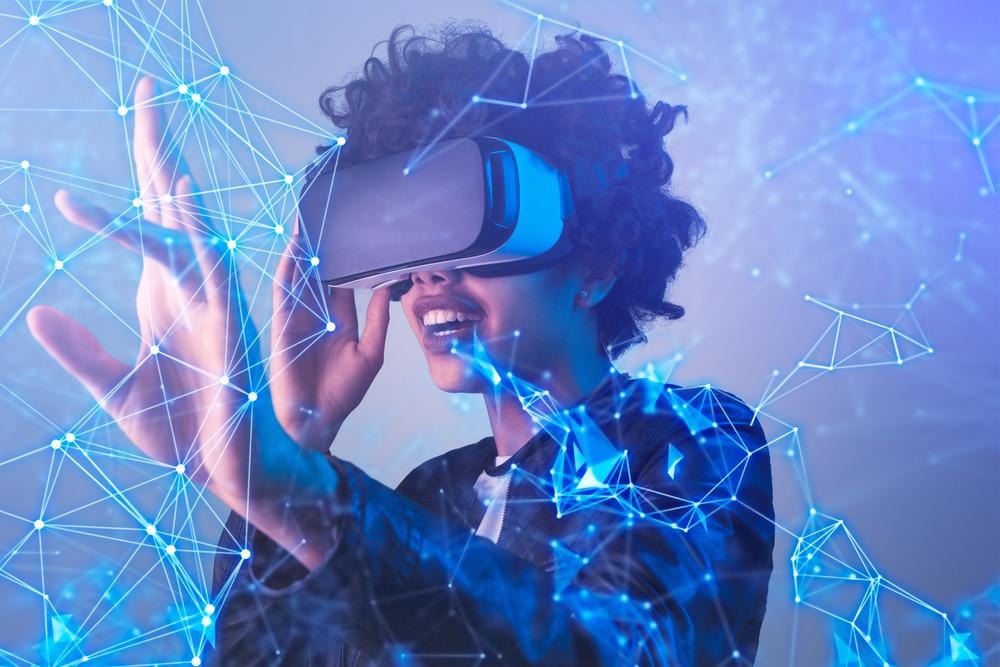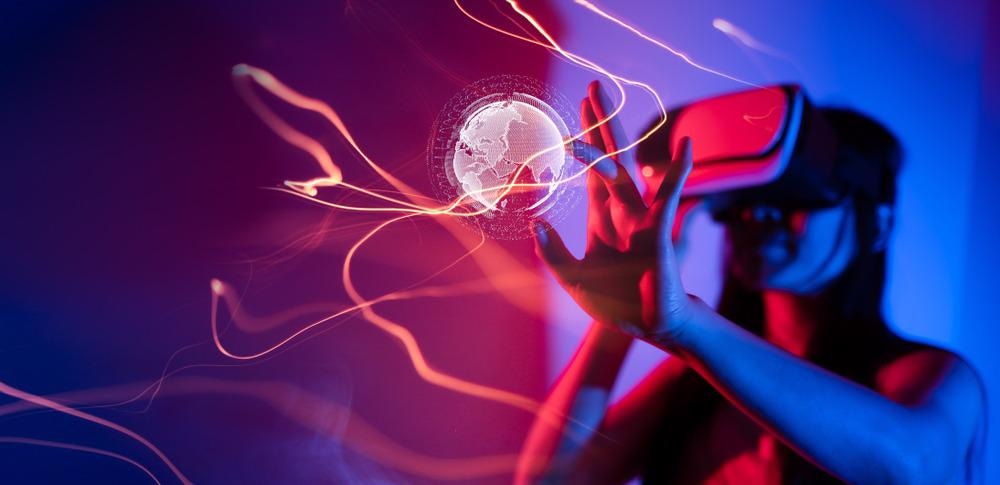Bosch, the global technology company, is producing state-of-the-art sensors to make augmented reality (AR) and virtual reality (VR) applications possible. High stability and low latency in Bosch's tiny microelectromechanical system (MEMS) motion sensor packages can reduce the effects of motion sickness, making them ideal for use in AR and VR devices that could fundamentally change our experience of the world in the near future.

Image Credit: Mark Nazh/Shutterstock.com
Bosch's Sensors for AR and VR
Together, these features reduce time lag – the few milliseconds of waiting before you see your action in the physical world reflected on the screen. This is especially important with head movements, where time lag means that vision displays may not immediately update with the brain's expectation of what the eyes should now be seeing and the real-world environment seen through layers of AR.
Time lag in AR and VR devices may be a factor in motion sickness occurring while using those devices. Some people can only use AR or VR devices for a limited period of time as a result of this.
According to Bosch, its sensors can help reduce time lag to the point where it is entirely undetectable, avoiding motion sickness in the process. Their high stability and low latency contribute to this reducing this adverse effect.
A low-noise accelerometer contributes to these sensors' applicability for realistic, immersive VR and AR, while good temperature stability makes the sensors useful in a wide range of environments. Bosch AR and VR sensors also feature a closed-loop gyroscope that significantly reduces the device's bias instability.
AR and VR Needs Accurate Sensing Solutions
AR and VR need precise sensing solutions to deliver immersive experiences and avoid negative consequences on the user. Fully achieving this requires VR devices to capture movements and gestures without any delay. Motion sensors that can provide high stability and low latency are therefore needed.
Sensor accuracy and precise onboard data processing also contribute to an immersive VR experience. They ensure image drift is minimized and users can fully engage in the experience.
What Industries Could Benefit from Improved AR and VR?
AR and VR technology saw some of its earliest industry adoption in the entertainment industry, with gaming driving progress in consumer-grade devices. The industry also uses AR technology in 3D cinema headsets, mobile applications like Pokémon GO!, and virtual live music events.
Warehousing and logistics have been making use of AR assistive technology in the form of virtualized inventory management displayed in HUDs for warehouse workers. Real estate and car sales have also used VR tours of property and vehicles to make sales, especially during COVID-19 lockdowns. Education also benefited from these technologies by making classes more engaging and effective through this period.
AR drone operation is employed across a number of sectors, including planning and surveying, mining, and environmental monitoring.
With improved devices, the technology could see applications in a broader range of industries. Pioneering medical applications are being developed, for example, both for doctors treating patients as well as patients receiving treatment.
Bosch Sensortec: Smart Sensors for AR and VR
Bosch has been developing inertial MEMS sensors and accelerometers for over 20 years through its Sensortec division. The automotive grade reliability and performance that the company is known for is brought to bear on consumer electronics through this venture.
Bosch MEMS sensors: Working principle of an accelerometer
Video Credit: Bosch Sensortec/YouTube.com
Bosch Sensortec manufactures sensors that are suited for AR and VR applications.
BMI085
The BMI085 is a 6-axis Inertial Measurement Unit (IMU) packed with a 3-axis, 16-bit MEMS acceleration sensor, and a 3-axis, 16-bit MEMS gyroscope. It has been specifically designed for use in AR and VR devices. It is also a highly compact sensor package that can be used in wearable sensor applications.
Its motion-to-photon latency is under 3 ms, and high-temperature fluctuations do not affect its stability performance. The temperature coefficient sensitivity (TCS) is only 0.002 %/K while the gyroscope's bias instability is typically below 2 °/h
Noise density in the accelerometer is kept under 120 μg/√Hz, and accuracy for the whole unit is boosted by data synchronization between the accelerometer and gyroscope.
The sensor is housed in a small 3.0 x 4.5 x 1.0 mm³ package.
BMI263
The BMI263 is Bosch Sensortec's ultra-low power IMU offering. This device also features two three-axis MEMS sensors (an accelerometer and gyroscope), but is the first Bosch Sensortec sensor to achieve I3C compliance as defined by MIPI Alliance.
BMM150
The BMM150 is a 3-axis digital geomagnetic sensor that is well suited for compass applications and can also help drones gain accurate heading. The BMM150 can be alongside an IMU consisting of a 3-axis accelerometer and a 3-axis gyroscope such as the BMI055 or BMI263.

Image Credit: Fit Ztudio/Shutterstock.com
Reducing Motion Sickness and Enabling AR and VR to Take Off
A team at the Florida Institute of Technology found that, while research on whether latency significantly contributes to simulator sickness in AR and VR devices, reducing apparent latency did lead to less simulator sickness in experiments.
To really take off, AR and VR technology companies have been focused on reducing the effects of motion sickness in their device simulations for some time.
Recently, a team of researchers from Oxford Brookes University, UK, found that the Microsoft HoloLens AR or mixed reality (MR) smart glasses would not cause simulator sickness symptoms for most consumers who use them.
Bosch Sensortec is well-positioned to make a good showing in the next wave of AR and VR devices.
References and Further Reading
Bosch Sensortec. (2021) Applications & Solutions | Bosch Sensortec. [online] Available at: https://www.bosch-sensortec.com/applications-solutions/ar-vr/
Buker, T.J., D.A. Vincenzi, and J.E. Deaton (2012) The Effect of Apparent Latency on Simulator Sickness While Using a See-Through Helmet-Mounted Display: Reducing Apparent Latency With Predictive Compensation. Human Factors. Available at: https://doi.org/10.1177/0018720811428734.
Vovk, A., F. Wild, W. Guest, T. Kuula (2018) Simulator Sickness in Augmented Reality Training Using the Microsoft HoloLens. CHI '18: Proceedings of the 2018 CHI Conference on Human Factors in Computing Systems. Available at: https://doi.org/10.1145/3173574.3173783.
Disclaimer: The views expressed here are those of the author expressed in their private capacity and do not necessarily represent the views of AZoM.com Limited T/A AZoNetwork the owner and operator of this website. This disclaimer forms part of the Terms and conditions of use of this website.